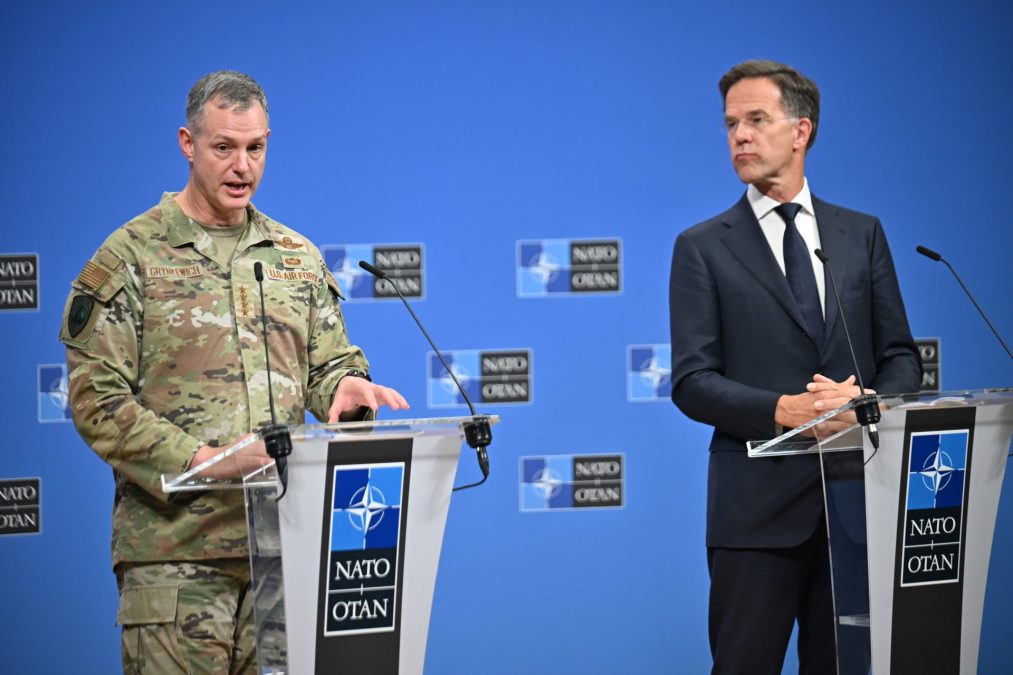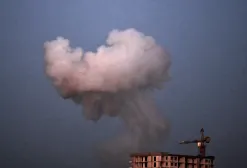Russian drone incursions prompt NATO to initiate new military activity on its eastern flank

Several NATO allies have agreed to surge weapons and troops to the east, as experts investigate the Russian drone incursions into Poland’s territory this week that sparked the potentially historic activation of the alliance’s air defenses.
NATO Secretary General Mark Rutte and Supreme Allied Commander Europe Gen. Alex Grynkewich unveiled plans for the new initiative — Eastern Sentry — during a press conference on Friday.
“This military activity will commence in the coming days and will involve a range of assets from allies including Denmark, France, the United Kingdom, Germany and others,” Rutte said. “In addition to more traditional military capabilities, this effort will also feature elements designed to address the particular challenges associated with the use of drones.”
Grynkewich, an American officer who is dual-hatted as SACEUR and commander of U.S. European Command, added that other nations will likely join the campaign in the near term — but “the order went out as this press conference began, and so operations are being brought together immediately underneath my authorities as SACEUR.”
Backed by NATO fighter jets and other support, Poland shot down several drones in its airspace during an hours-long episode. Authorities from the nation said they recorded roughly “19 cases of incursions by Russian drone-type objects into Polish airspace” the night between Sept. 9 and Sept. 10, in a report to the U.N. Security Council, which hosted an emergency briefing Friday.
The events occurred as Moscow was conducting a large-scale aerial attack on Ukraine. Russia’s Defense Ministry denied targeting Polish territory in the aftermath.
“Our full assessment of the incidents on Wednesday is ongoing, and whether or not Russia’s actions were deliberate, Russia has violated NATO airspace. Therefore we must, as NATO, make clear our resolve and our ability to defend our territory — and that is exactly what Eastern Sentry is designed to do,” Rutte told reporters Friday.
The new program is modeled off of the Baltic Sentry vigilance activity that was launched by the alliance in January to more strategically protect critical undersea infrastructure in that region from sabotage as threats were escalating.
Grynkewich noted that those involved in Eastern Sentry “will also work with Allied Command Transformation, as [they] did in Baltic Sentry, to rapidly experiment and field new technologies such as counter-drone sensors and weapons.”
He confirmed that, so far, France intends to send three Rafale fighter jets, Denmark will contribute two F-16s and an anti-air warfare frigate, and “some ground-based air-defense capabilities have been offered.”
“But I would ask that we don’t focus on those specific items. The key to this is an entirely new defense design. So, the previous way that we orchestrated ourselves on the eastern flank is we had individual air-policing actions in different locations, and we had individual ground-based air-defenses in several locations, as well. And then, of course, we’re working with nations on a case-by-case basis as we see threats,” the top alliance and U.S. commander in Europe said.
“This is going to be a comprehensive and integrated approach, and with additional resources, we’ll be able to plug gaps in the line. We’ll be able to concentrate forces where we need to, to defend at a moment of a particular threat, and we’ll have much better communication across the entire eastern flank so that it’s truly an integrated approach to this defense,” Grynkewich explained.
In terms of reach, Eastern Sentry is envisioned to cover “from High North to the Black Sea and the Mediterranean, anywhere that [NATO] might see a threat from the Russians,” he noted.
Regarding concerns raised after the incident in Poland about readiness and NATO’s multi-million dollar weapons systems reportedly destroying only a handful of remarkably cheaper Russian drones, Grynkewich described it as “a highly successful operation.”
However, he also emphasized that the military partners are continuously learning at every opportunity, including from the smallest tactical errors.
“And in my judgment, the scale of the incursion the other day was obviously larger than previous incursions that we’ve had. So, bringing additional resources to bear on this problem will help to solve that,” Grynkewich said. “So that’s why we’re starting this [Eastern Sentry] operation the way we are.”
Notably, details about whether and how the U.S. would be contributing to Eastern Sentry were not made clear at the press briefing.
“As far as those military assets — I’m right here and I’m involved — and the United States’ commitment to the integrated military structure of the alliance remains,” Grynkewich said. “For kinetic assets, the other day there were not any, [but] this is a function of the rotation of forces that we have to our different missions around the alliance.”






